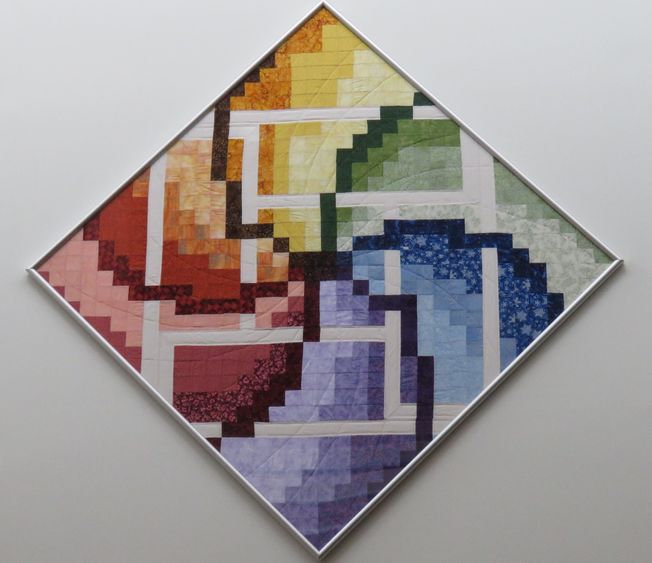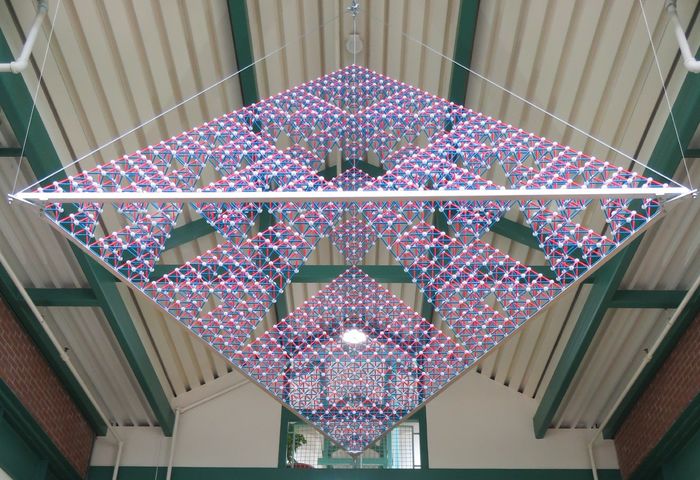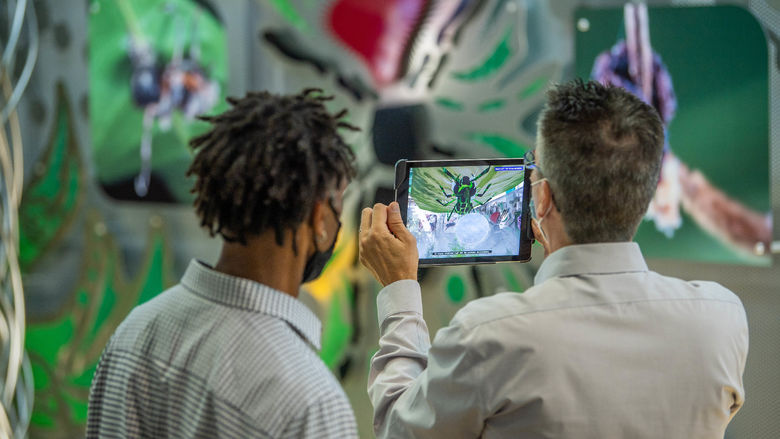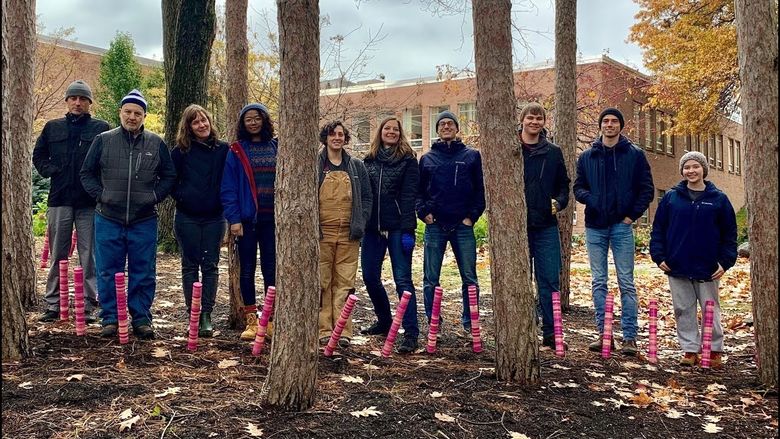
A quilt sewn by Pam Silver, associate dean for academic affairs at Penn State Behrend, includes a color for each scientific discipline that is taught at the college.
Science and the arts might seem to be very different disciplines, but the scientific method and the creative process have a lot in common: Inquiry is at the heart of each.
“People sometimes think science is about memorizing facts, but it’s really about making discoveries and wringing answers out of nature,” said Pam Silver, associate dean for academic affairs and distinguished professor of biology at Penn State Behrend. “When you have a scientific question, it takes a lot of creativity to find the answer to it.”
Scientists are, by nature, creative individuals, and two new pieces of art in Penn State Behrend’s School of Science complex illustrate that:
Silver created the colorful quilt, titled “A Way of Knowing,” that hangs in Hammermill Hall. Each color in the quilt represents a scientific discipline taught at Behrend -- biology, chemistry, environmental science, nursing, physics, mathematics and mathematics education. A spiral in the quilt represents the net movement of scientific discovery, from observation to hypothesis to testing to understanding.
High above the entrance to Roche Hall is another work of art: “Fractal in Flight,” a stage-5 Sierpinski tetrahedron that models a fractal with infinite triangles. It was created by students in the Math Club, with help from the club’s adviser, Joe Previte, associate professor of mathematics.
“A fractal is a self-similar structure with recurring patterns at progressively smaller scales,” Previte said. “Fractals are useful in modeling natural structures such as plants, coastlines or snowflakes.”
Some natural objects appear to be completely random in shape, but there is an underlying pattern that determines how these shapes are formed and what the object will look like, Previte said. Mathematics can help us to better understand the shapes of natural objects, which has applications in medicine, biology, geology and meteorology.
Students built the fractal using Zometool construction parts. The sculpture consists of 2,050 white balls and 6,144 red and blue struts.
Heather Cass
Publications and design coordinator
Penn State Erie, The Behrend College






